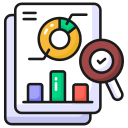Telling Stories with Numbers
Always anchor KPIs to a goal, a baseline, and a comparison: last period, forecast, or peer benchmark. When a marketplace showed supply growth beating demand growth, priorities flipped to activation of buyers. Share one KPI and the comparison that would make it instantly more meaningful.
Telling Stories with Numbers
Choose visuals that reduce cognitive load. Use line charts for trends, bar charts for categories, and avoid 3D fluff. Label directly, add small annotations, and show uncertainty where relevant. What chart has misled your team before? Share the lesson so others avoid the same trap.












